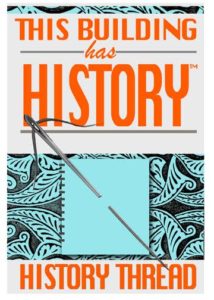“An extraordinary piece of Lowcountry S.C. architecture.”
1100 Nesmith Road
City Directories and History: The lovely 1843 Black Mingo church of Greek Revival was built by Cleland or Cleveland Belin, contractor.
Willtown, a village on Black Mingo Creek, as early as 1820. However, a strong leader emerged among the Baptist of the area in the person of Cleland Belin (Blan), who had come to Willtown around 1810 to live with his uncle, John Screven. He became a wealthy merchant and efficient businessman. In 1842-43, Black Mingo Church was built under the supervision of Belin near the site of Willtown, only a short distance from his home. This beautifully symmetric wooden church of meeting-house type architecture may be seen today in a state of good preservation, though seldom used. Known locally as Old Belin’s, in honor of its influential founder, it supported a small congregation for many years and is the parent of the present Nesmith Baptist Church in the Nesmith Community.
ADDITIONAL INFORMATION: The first church built within Williamsburg was known as the Black Mingo Meeting House, some-times referred to as the Black River Church (due to its proximity to the conjunction of Black River and Black Mingo Creek), the Brick Church, or the Wyneau congregation. The construction of this house of worship had been completed by the Christmas of 1726, during which time the Reverend Morritt, visiting at the Prince Frederick Church, noted that the Dissenting Congregation had a finished building. There has been much debate and confusion over the existence of such an early church in the Williamsburg area. However, Dr. Howe, in his History of the Presbyterian Church in South Carolina, quotes from a letter written by Dr. J. R. Witherspoon in 1848, who said, “there was also a church below Black Mingo, usually called ‘the brick church,’ erected several years anterior to the church near Kingstree . . .,” which was founded about 1736.
It is probable that the Reverend Elisha Screven, “Anti-Pedobaptist” minister, played an instrumental role in the early life of the church; however, it was soon dominated by the Presbyterian element. By 1729, the Reverend Mr. Morritt had become pastor of Prince Frederick Church and in that year noted that the Black Mingo Congregation had a teacher from the Bermudas but does not state whether he served in the capacity of minister. A notable Presbyterian minister, John Baxter, received grants on Black Mingo as early as 1736, and was available to this church, where he preached during intervals in his later years.
William Thompson, Jr., a resident of Winyah, with land on the south side of Black Mingo Creek, left a will dated 1742 in which he mentions the construction of a new meeting house. He stipulates that his executors are “obliged to make a good and sufficient title to four acres of land being part of this tract of land wherein I now dwell to the use of building a Presbyterian Meeting house on and for the assistance of the building of the said house my Executors is to pay one hundred pounds … in twelve months after my decease.” It is probable that Mr. Thompson’s bequest was used as William Swinton of Black Mingo, in his will recorded in 1742, left one hundred pounds to the “Brick Church.”
The last mention of the Black Mingo Church is found in the Session records of the Indiantown Presbyterian Church, dated June 20, 1824. “Mrs. Margaret McConnell was received into this Church on reputable testimony of her having been being now extinct.” In 1957, the owner of the property where the church stood related to a local historian that this church had been burned by British soldiers coming up Black River from Georgetown, during the War of 1812.
(Information from: Names in South Carolina by C.H. Neuffer, Published by the S.C. Dept. of English, USC)
Stay Connected
Explore history, houses, and stories across S.C. Your membership provides you with updates on regional topics, information on historic research, preservation, and monthly feature articles. But remember R&R wants to hear from you and assist in preserving your own family genealogy and memorabilia.
Visit the Southern Queries – Forum to receive assistance in answering questions, discuss genealogy, and enjoy exploring preservation topics with other members. Also listed are several history and genealogical researchers for hire.
User comments welcome — post at the bottom of this page.
Please enjoy this structure and all those listed in Roots and Recall. But remember each is private property. So view them from a distance or from a public area such as the sidewalk or public road.
Do you have information to share and preserve? Family, school, church, or other older photos and stories are welcome. Send them digitally through the “Share Your Story” link, so they too might be posted on Roots and Recall.
Thanks!




